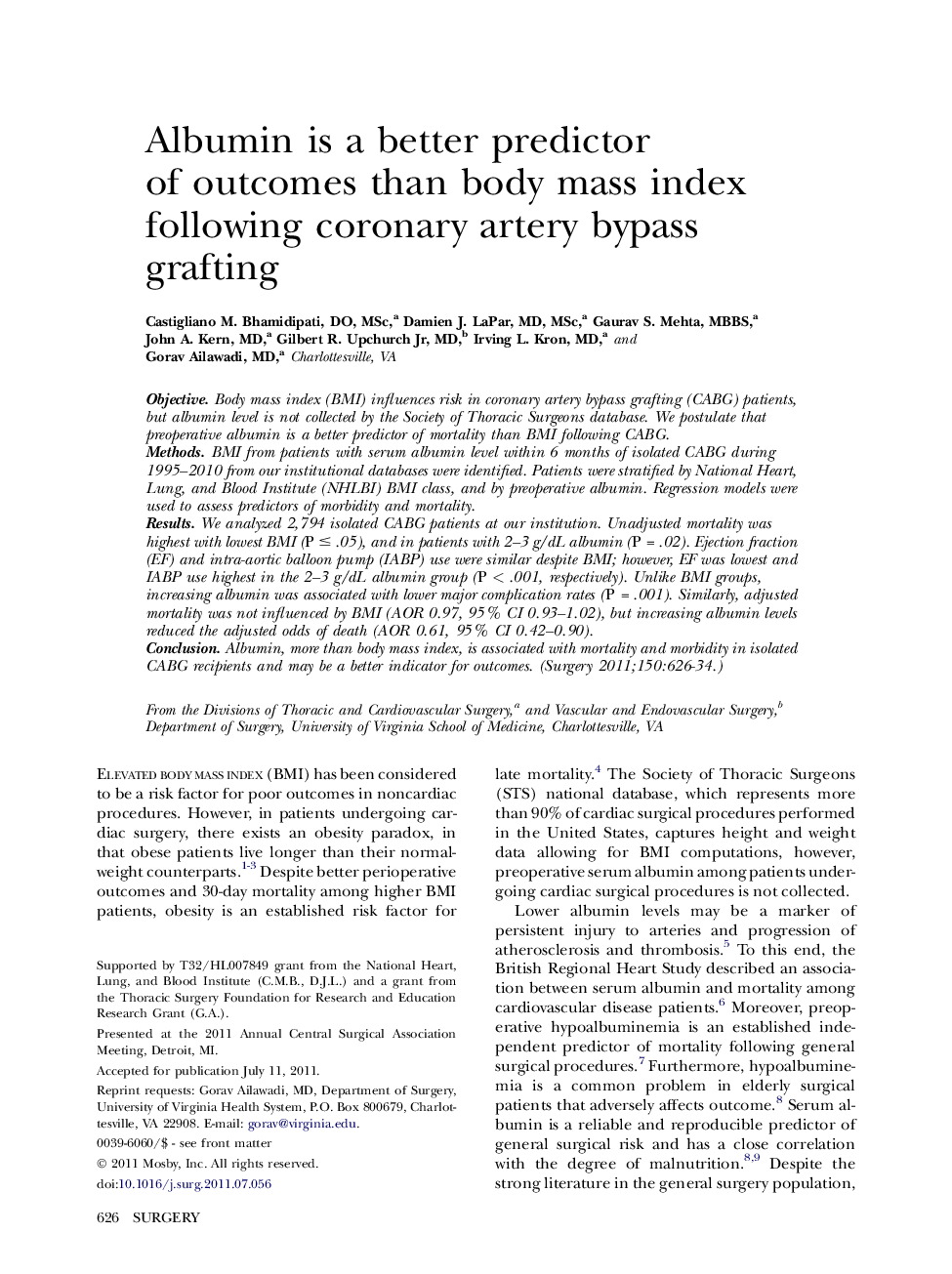| Article ID | Journal | Published Year | Pages | File Type |
|---|---|---|---|---|
| 4308563 | Surgery | 2011 | 9 Pages |
ObjectiveBody mass index (BMI) influences risk in coronary artery bypass grafting (CABG) patients, but albumin level is not collected by the Society of Thoracic Surgeons database. We postulate that preoperative albumin is a better predictor of mortality than BMI following CABG.MethodsBMI from patients with serum albumin level within 6 months of isolated CABG during 1995–2010 from our institutional databases were identified. Patients were stratified by National Heart, Lung, and Blood Institute (NHLBI) BMI class, and by preoperative albumin. Regression models were used to assess predictors of morbidity and mortality.ResultsWe analyzed 2,794 isolated CABG patients at our institution. Unadjusted mortality was highest with lowest BMI (P ≤ .05), and in patients with 2–3 g/dL albumin (P = .02). Ejection fraction (EF) and intra-aortic balloon pump (IABP) use were similar despite BMI; however, EF was lowest and IABP use highest in the 2–3 g/dL albumin group (P < .001, respectively). Unlike BMI groups, increasing albumin was associated with lower major complication rates (P = .001). Similarly, adjusted mortality was not influenced by BMI (AOR 0.97, 95% CI 0.93–1.02), but increasing albumin levels reduced the adjusted odds of death (AOR 0.61, 95% CI 0.42–0.90).ConclusionAlbumin, more than body mass index, is associated with mortality and morbidity in isolated CABG recipients and may be a better indicator for outcomes.
